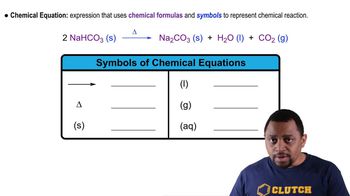Here are the essential concepts you must grasp in order to answer the question correctly.
Ionic vs. Covalent Compounds
Ionic compounds are formed when electrons are transferred from one atom to another, resulting in charged ions that attract each other. They typically have high melting and boiling points due to strong electrostatic forces. In contrast, covalent compounds involve the sharing of electrons between atoms, leading to lower melting and boiling points. Understanding these differences is crucial for determining the nature of the compound in question.
Recommended video:
Melting and Boiling Points
The melting point is the temperature at which a solid becomes a liquid, while the boiling point is the temperature at which a liquid becomes a gas. High melting and boiling points often indicate strong intermolecular forces, which are characteristic of ionic compounds. In this case, the compound's melting point of 77°C and boiling point of 201°C suggest significant intermolecular interactions, hinting at its ionic nature.
Recommended video:
Boiling Point Elevation Concept 1
Chemical Formulas
A chemical formula represents the elements in a compound and their respective ratios. For ionic compounds, the formula is typically derived from the charges of the ions involved. In the case of gallium and chlorine, gallium typically forms a +3 ion (Ga³⁺) and chlorine forms a -1 ion (Cl⁻), leading to a likely formula of GaCl₃, which reflects the stoichiometry needed to balance the charges.
Recommended video:
Chemical Reaction: Chemical Change Concept 2
 Verified step by step guidance
Verified step by step guidance


